Access Bars Explained: Benefits, Side Effects, and a Powerful Alternative
Access Bars is a popular energy healing modality. It involves light touches to 32 points on the head. Those points are said to store thoughts, emotions, and limiting beliefs.
But does it actually work?
Many people search for “Access Bars benefits,” “Access Bars points,” and “Access Bars side effects” hoping for answers.
I practiced Access Bars for years. My wife was a Facilitator, and together we “ran each other’s Bars” often, while also giving sessions to many others. It was part of my journey, and I experienced the good, the bad, and the not-so-pretty sides of it.
Over time, I noticed something important. While sessions felt relaxing, little in my life truly shifted. The changes were surface-level, not transformational.
Alongside Bars, I was also exploring another approach. One that worked on every level of being: physical, mental, emotional, psychological, psychic, and spiritual.
This is the method that ended my 30+ years of sinusitis and long-term seasonal allergies. It has also created lasting emotional and psychological change, as well as improvements in business, finances and inner certainty.
That approach is the Yuen Method.
On this page, I’ll explain what Access Bars is, its benefits and side effects, and why I no longer practice it. Most importantly, I’ll introduce the powerful alternative I now use. One designed to create targeted, lasting transformation, instead of hoping for change while lying on a table.
Why I No Longer Practice Access Bars
Access Bars was a stepping stone in my journey. It helped people feel lighter and more relaxed. Perfect for an afternoon nap and reset. But it didn't deliver the deep, lasting transformations that I and many others were looking for.
By then, I had become proficient with the Yuen Method, and the difference was night and day. Change was targeted, precise, and unmistakable.
Instead of lying on a table for an hour and hoping something shifted, I could pinpoint an issue and clear it. Like a sniper hitting a mark.
The Yuen Method doesn’t rely on touching points on the head. It works by identifying and eliminating the actual weaknesses at the root of a problem. Whether physical, emotional, psychological, or hidden beneath conscious awareness.
This shift allowed me, and my clients, to resolve challenges that had lingered for years. The kinds of issues that Access Bars could never reach.
A Powerful Alternative to Access Bars: The Yuen Method
The Yuen Method, created by Dr. Kam Yuen, is a no-touch, non-verbal process. It uses a feeling-based sense to locate energetic weaknesses and strengthen them.
Every problem in your life is made up of weaknesses: sometimes just a few, sometimes many. When the true cause of a weakness is identified and strengthened, the problem itself can dissolve.
Sessions don’t require travel, video, or even being seen. They can be done over the phone, which helps when issues carry an element of shame or vulnerability. Results are often felt within minutes, which is why Dr. Yuen called it the science of immediate results.
What makes it different:
Want to explore further? Read my full guide to the Yuen Method.
Or if you'd like to experience the results it can give, book a free 15-minute introduction call.
Access Bars vs Yuen Method
The Approach
Access Bars: Gentle touch on 32 points on the head
Yuen Method: No-touch, mostly non-verbal energetic clearing
The Focus
Access Bars: Releases “stuck energy” by stimulating points
Yuen Method: Identifies and strengthens weaknesses at the root cause, at whatever level
The Experience
Access Bars: Often relaxing, calming, like a meditation or massage
Yuen Method: Often immediate awareness of shifts; clarity, lightness, and resolution of specific issues
The Origin
Access Bars: Developed by Access Consciousness in the 1990s
Yuen Method: Developed by Dr. Kam Yuen over a 50+ year period
Style Session
Access Bars: Practitioner applies light touch to points on the head
Yuen Method: Practitioner works telepathically/energetically, no physical contact needed (can be done remotely)
Reported Benefits
Access Bars: Stress relief, sense of calm, improved sleep
Yuen Method: Relief from long-standing issues, breakthroughs in stuck areas, rapid transformation
Best For
Access Bars: People seeking a relaxing, meditative experience
Yuen Method: People ready to resolve persistent issues and create deeper change
Aspect | Access Bars | Yuen Method |
|---|---|---|
Approach | Gentle touch on 32 points on the head | No-touch, mostly non-verbal energetic clearing |
Focus | Releases “stuck energy” by stimulating points | Identifies and strengthens weaknesses at the root cause, at whatever level |
Experience | Often relaxing, calming, like a meditation or massage | Often immediate awareness of shifts; clarity, lightness, and resolution of specific issues |
Origin | Developed by Access Consciousness in the 1990s | Developed by Dr. Kam Yuen over a 50+ year period |
Style Session | Practitioner applies light touch to points on the head | Practitioner works telepathically/energetically, no physical contact needed (can be done remotely) |
Reported Benefits | Stress relief, sense of calm, improved sleep | Relief from long-standing issues, breakthroughs in stuck areas, rapid transformation |
Best For | People seeking a relaxing, meditative experience | People ready to resolve persistent issues and create deeper change |
Ready for More Than Just Relaxation?
Access Bars can be calming, but if you’re looking for lasting transformation — the kind that resolves long-standing issues at their root — the Yuen Method is the path forward.
Start here:
Download my free guide: 3 Questions to Ask Before Choosing Any Healing Modality
Or Book a free 15-minute introduction call
Take the next step and experience what real change feels like.
Curious what people report about Access Bars? Below you’ll find an overview of common experiences, along with some of the most commonly cited examples of "Access Bars science".
The 32 Points of Access Bars
Access Bars is built on the idea that there are 32 points on the head, each connected to a different area of life. Some of these points are said to represent:

Practitioners believe that lightly touching these points helps release blocked energy and clear limiting beliefs tied to those areas.
What Kind of Benefits Might You Get From The Bars?
Experiences with Access Bars vary. No two sessions are exactly alike, and people often describe different effects each time.
Here are some of the benefits people commonly report:
Practitioners sometimes reference brain scans and case studies to suggest that these changes are measurable. Research, however, is limited and largely anecdotal.
One of the co-creators of Access Consciousness®, Dr. Dain Heer, shares his personal story of being suicidal before his first Bars session. He describes it as the first time in years he felt peace, and says he never contemplated suicide again.

Dain Heer
Co-Creator, Access Consciousness
"It was the first sense of peace I'd had in almost three years. After that first Bars session, I never contemplated suicide again"
I saw some of these effects in my own practice and with my clients. For some, the benefits were real and meaningful.
But for me, the results rarely lasted, and they didn’t reach the deeper root causes people were struggling with. That realization pushed me to keep looking for a more direct, lasting approach, which I found in the Yuen Method.
The Science Behind Access Consciousness Bars
Many people search for “the science of Access Bars.” Practitioners often point to brain scans and other imaging studies as evidence that Bars sessions create measurable changes in the brain and body. Below are some of the most commonly cited examples.
Brain Imaging Studies (Dr. Jeffrey Fannin)

Dr. Jeffrey Fannin, a neuroscientist with experience in brain mapping, conducted EEG studies on individuals before and after Access Bars sessions. EEG (electroencephalography) measures brainwave activity through 19 electrodes on the scalp.
In these studies, a baseline scan was taken with the subject at rest (“eyes closed, brain on task”). After a single Access Bars session, the scan was repeated under the same conditions.
The results showed noticeable differences. Before the session, the scans displayed high levels of activity in certain regions (shown in red/orange on the images). After the session, activity patterns shifted toward what Fannin described as a more balanced, “normal” state (shown in green).
Below are examples of the scans he presented:
Before...
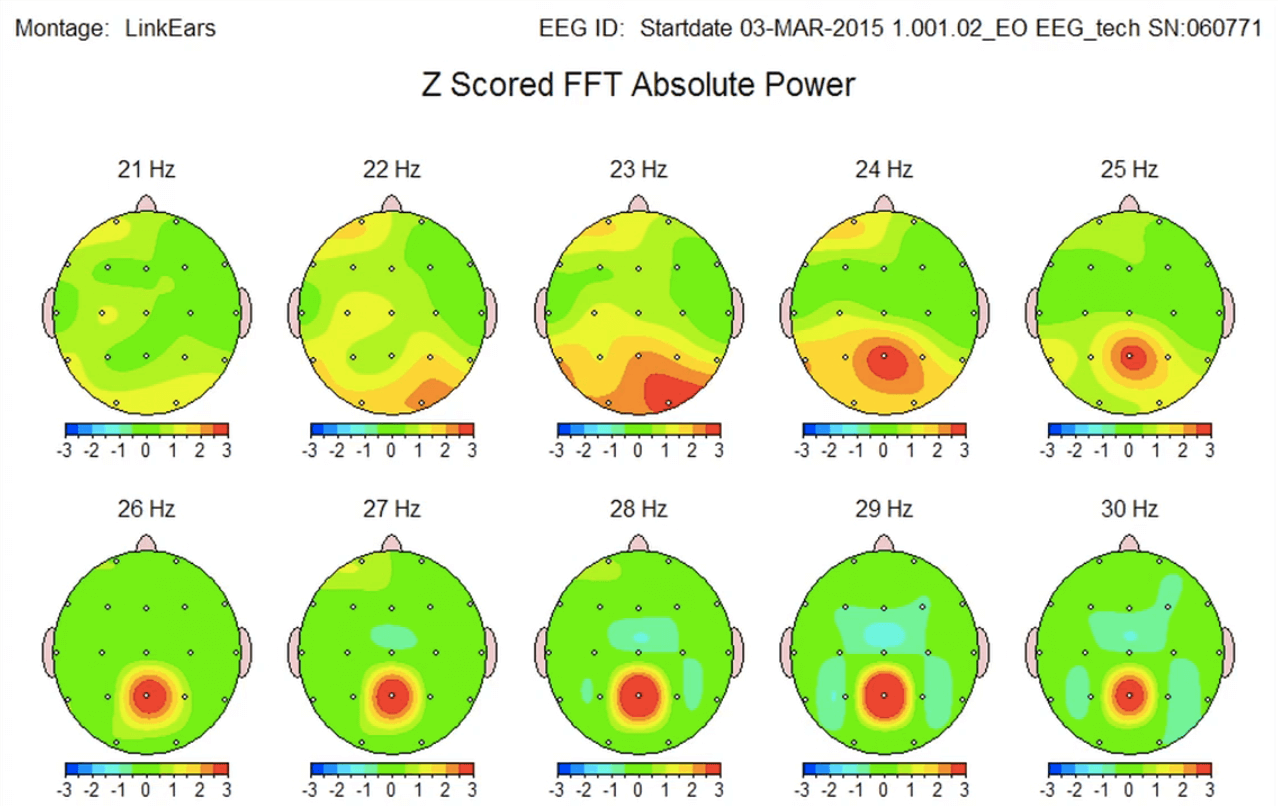
After...
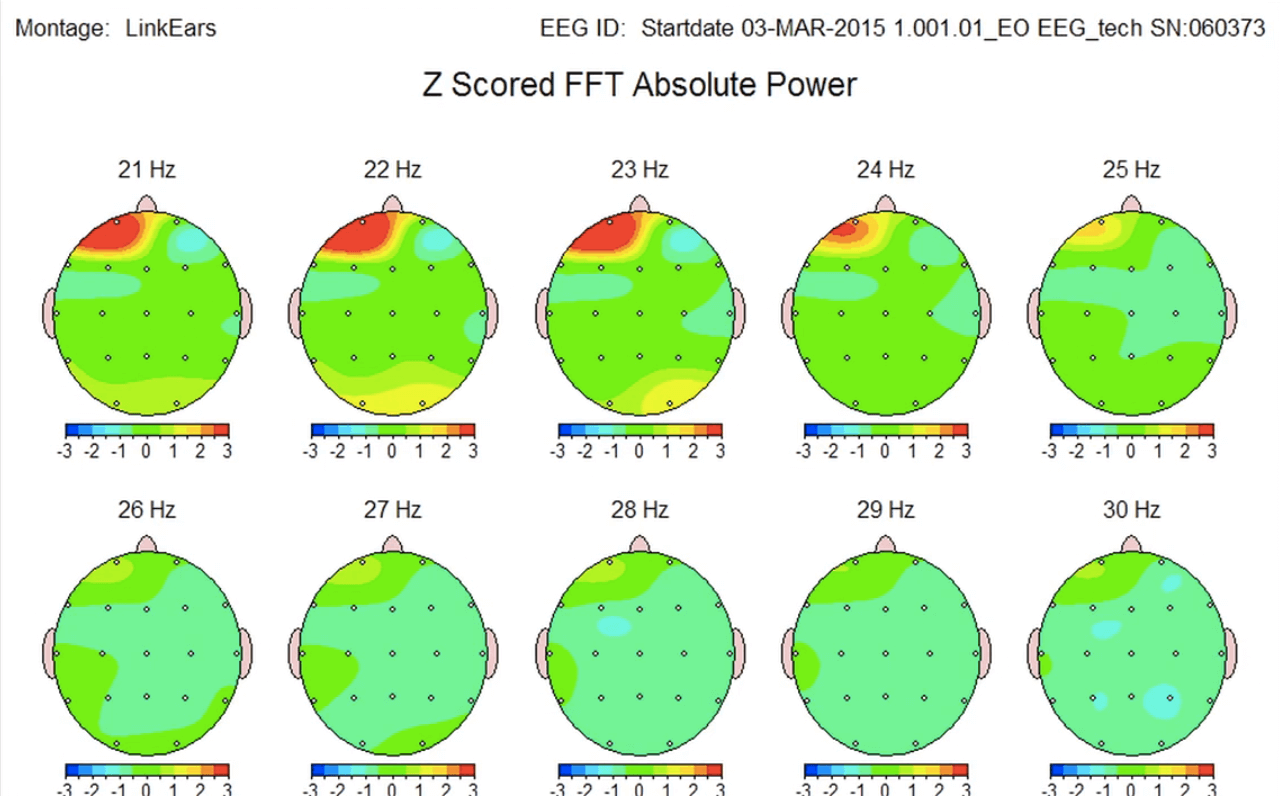
Practitioners often cite these findings as evidence that Access Bars can calm the brain and reduce overactivity. While interesting, the research is limited in scope and has not been widely peer-reviewed.
From my perspective, these scans do reflect what many people report feeling after a Bars session: calmer, lighter, less mentally busy.
But in my experience, those effects were temporary. This realization eventually led me to look for approaches, like the Yuen Method, that could create deeper and more lasting change.
Research Study On Access Consciousness Bars by Dr. Lisa Cooney

Dr. Lisa Cooney
Dr. Lisa Cooney is a licensed psychotherapist and Access Bars facilitator who has conducted small-scale studies on the effects of Bars sessions. She has used thermal imaging and brain scans to document changes before and after treatments.
In her reports, participants often showed reductions in stress markers and shifts in brain activity patterns following a Bars session. She has suggested that these results indicate Bars can calm the nervous system and ease emotional intensity.
Below are examples of the scans she presented.
Before and after images for Case Study #1
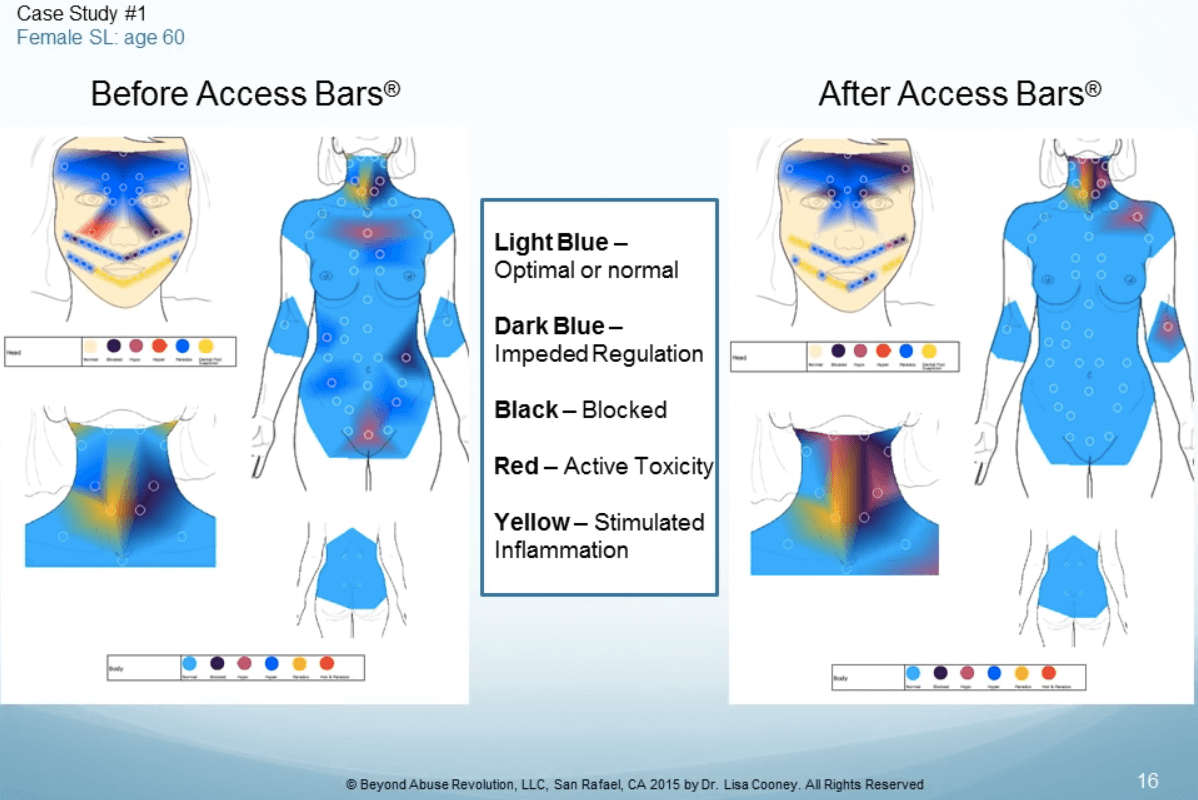
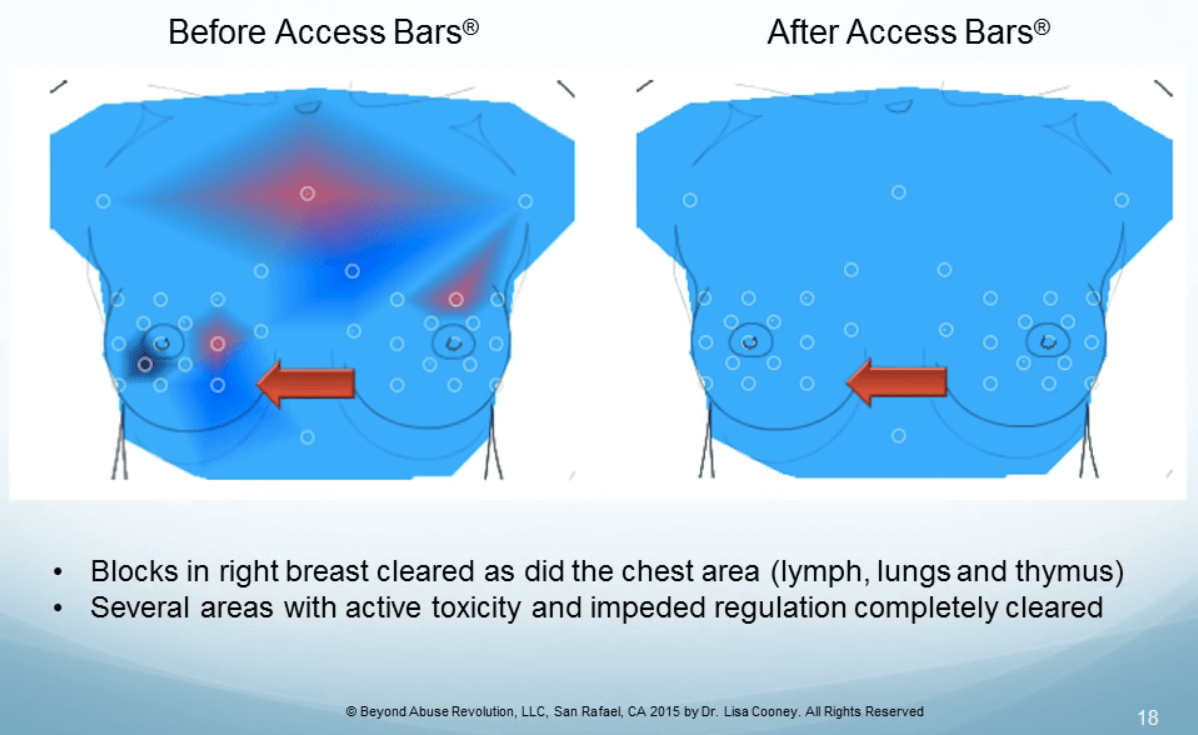
Before and after images for Case Study #2
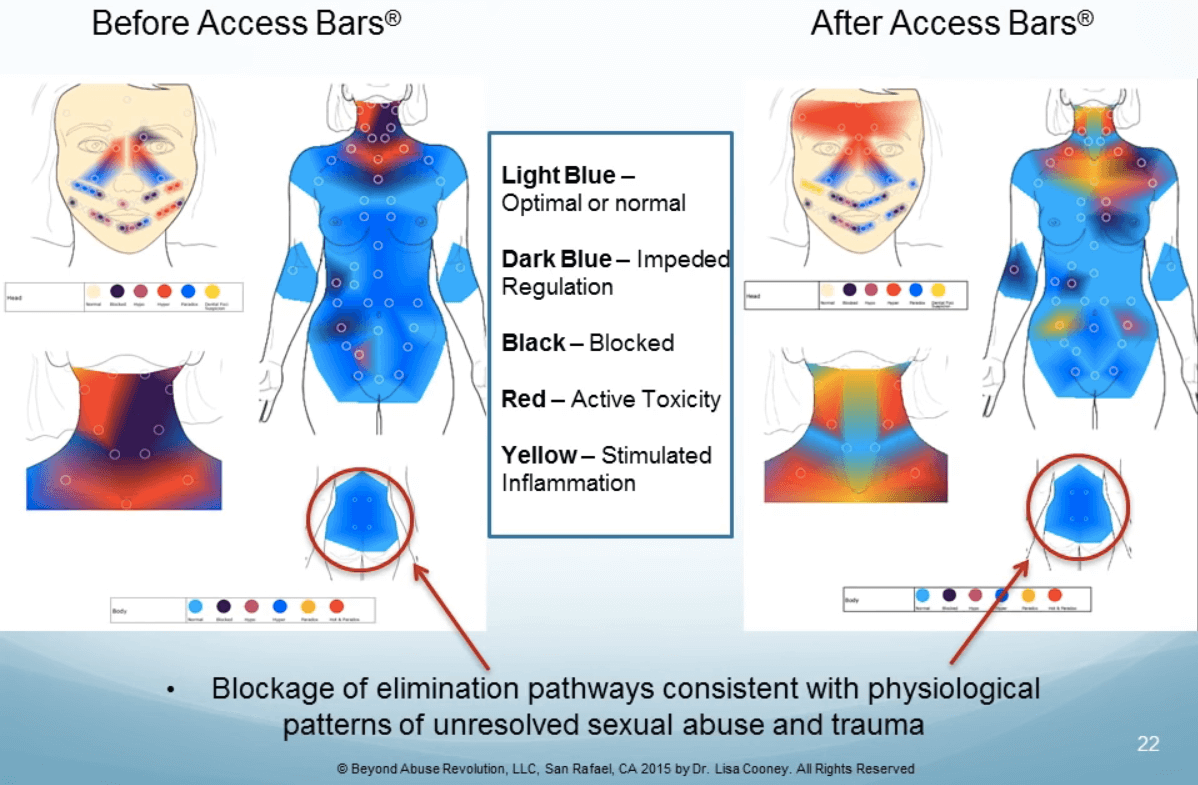
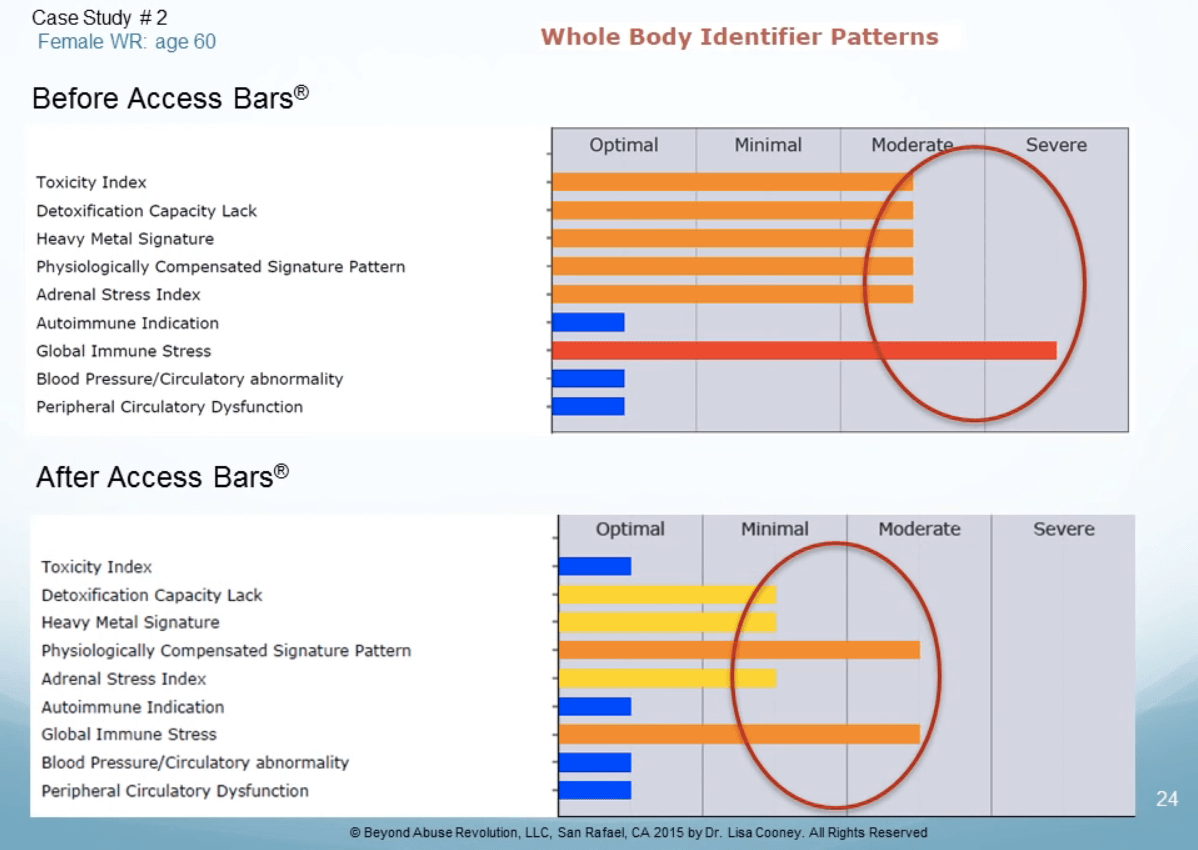
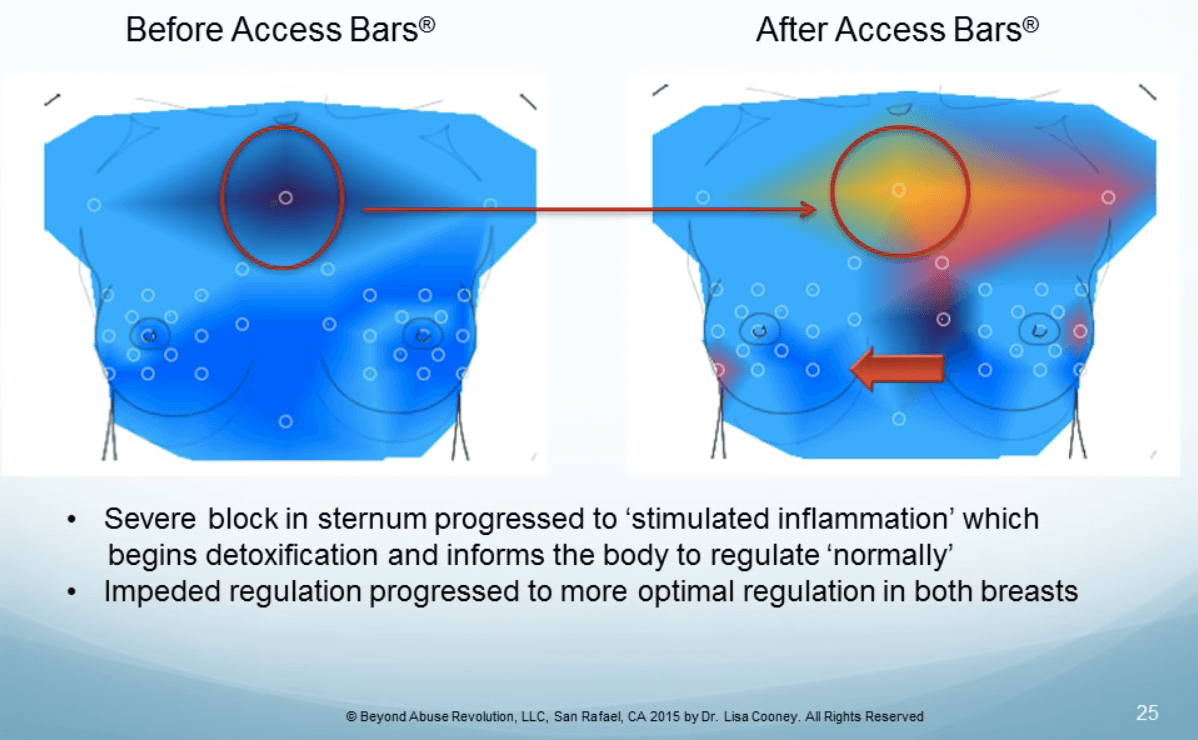
Practitioners frequently cite Cooney’s findings as further evidence that Bars may influence both the brain and body. However, as with other Bars-related studies, these results are not widely peer-reviewed and remain preliminary.
In my own practice, I saw clients experience some of the same short-term effects these scans appear to reflect: relaxation, less stress, a sense of calm.
But for deeper, lasting transformation, I found that Access Bars fell short. This is what ultimately led me to specialize in the Yuen Method, which works at the root of problems rather than just shifting temporary states.
Learn more about the Yuen Method here.
Thermometry & Access Bars Research: 13 Person Study
Another small-scale study often referenced within the Access Bars community was conducted on 13 participants. Thermometry was used to measure changes in body temperature and stress markers before and after a Bars session.
The results showed shifts that practitioners interpret as evidence of reduced stress and improved regulation of the nervous system. For example, some participants displayed changes in thermal imaging patterns that suggested a move toward greater balance.
Below is an example of the images presented in the study:

As with other research on Bars, these findings are interesting but limited. The study was small, not peer-reviewed, and the results are preliminary. Practitioners often cite it to support claims about Bars’ effects, but it doesn't explain why outcomes can vary significantly between people.
From my perspective, studies like this highlight the short-term calming effects that Bars can create.
But they also underline the limitations: changes often stop at the surface.
My own path led me to the Yuen Method, which I’ve found produces deeper, more lasting results by working directly on the root of issues rather than temporary physiological states.
What People Report About Access Bars
People who try Access Bars often share a range of experiences. Some describe feeling deeply relaxed, lighter, or more at peace. Others notice shifts in mood, sleep, or stress levels. For some, the effects are profound; for others, they are subtle or short-lived.
Practitioners collect and share stories like these to illustrate how Bars sessions may help. While they reflect genuine experiences, it’s important to remember that individual results vary and that scientific validation is limited.
In my years of practicing Access Bars, I heard many of these same reports first hand. Clients often left feeling calmer and less burdened. At the same time, I saw how those changes sometimes faded quickly.
This was one of the main reasons I transitioned to the Yuen Method. It's an approach that doesn’t just ease symptoms for a time, but works directly on the energetic root causes of problems.
That’s where I’ve found transformation that lasts.
Curious about the difference? Learn more about the Yuen Method here, or book a free 15-minute introduction call.
Video Presentations of Access Bars Studies
Practitioners of Access Bars often share videos like this to illustrate their perspective. I include them here so you can see how they present their work, though I now practice differently, with the Yuen Method.
Dr. Fannin's Presentation
Practitioners often reference Dr. Jeffrey Fannin’s talks and presentations when discussing the “science of Access Bars.” The video below is an example of how his findings are shared within the Access Bars community.
I include it here so you can see how proponents present their perspective. While I found the research interesting, my own experience was that the benefits were mostly short-term. This is part of what led me to move beyond Bars and into the Yuen Method, which has created deeper, more lasting results.
Dr. Cooney's Presentation
Dr. Lisa Cooney has also presented her work with thermal imaging and Bars sessions through video. The clip below is an example of how Bars facilitators share their research and personal experiences.
I share it here for context. In my view, while Bars can shift how someone feels in the moment, the changes don’t always last. This is why I now focus on the Yuen Method, which consistently works at the root level rather than temporary states.
Download my free guide: 3 Questions to Ask Before Choosing Any Healing Modality
